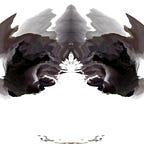From Ideation to Concept ✷
Week 01 | Nov 11
Nov 17, 2020
In the morning everyone had the opportunity to perform their analog personal data. From live drawings and the mixing of water colour paints, to self-made beats and hand gestures representing leg positions — all the performances were really interesting interpretations of the individually collected data. The rest of the day consisted of a presentation from Marcial, as well as various discussions which led to the formation of the groups.
Inspiration from Marcial’s Presentation
Questions to Consider
- What drives the design? e.g. is it functional, speculation or critique
- Where could the data come from? Tracking? e.g. sensors
- How could you map the data to a geometry? e.g. using a metaphor
- Or is the form making process inspired by existing models? e.g. fungus, cell division, etc.
- What is the fabrication process?
Summary of Discussion
- Revealing what is not typically visible, patterns, etc.
- Exploring more than the five basic human instincts e.g. proprioception
- Biochemicals e.g. tears, sweat, saliva, etc.
- Humans as a kind of “body factory” and/or circular economy
- Gaining a different perspective
- Radio frequencies
- Furniture as extensions of the body
- Physical restrictions e.g. voodoo dolls
- Emotional literacy
- Ageing process and transformation of the body
- The world or surrounding environment as a playground
- Living in a different body; simulating other body functions e.g. pregnancy
- Deprivation e.g. sleep
- Ingestible devices
- Hack yourself
Emotional Literacy
Andy Kirk, Colin Schmid, Roman Engler, Zoë Urand
